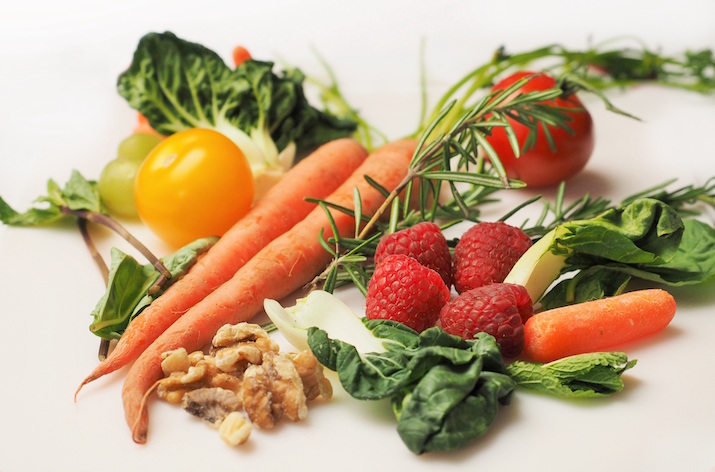
Today’s post is a compilation of answers. As an online coach who works with a wide variety of clients, I get all sorts of questions on counting macros.
I get many questions around the specifics of flexible dieting. Flexible dieting has taken the fitness world by storm, so I don’t feel the need to give an overview. Instead I just want to address some common questions. To make your dieting practice as easy as possible, here are 7 questions I get all the time, and my answers.
Without further ado, here are the seven most popular questions I get on flexible dieting and tracking macros.
1. Should I track total carbs or net carbs?
Always track total carbs. Sometimes packages will advertise “net” carbs, which deducts fibre from the total carb count. You still need to count everything. Make sure you look at the nutritional information panel, and don’t go by what the package says on the front.
I always use this example. If I ate a huge bowl of Ben and Jerry’s, but sprinkle 50 grams worth of Metamucil on it, does that fiber cancel out all the sugary carbs from the ice cream? No. Just, no. Unfortunately it doesn’t work like that.
2. What about zero calorie drinks with macros? What’s up with those?
I have an addiction to caffeine. Many people also share in this addiction. If you are one of those people, you’ve probably seen the zero-calorie energy drink options. Upon further investigation, you may have also noticed these drinks sometimes have 2-4 carbs per serving. This is due to a loophole that allows manufacturers to claim zero calories if it’s less than a certain amount – stupid.
Those trace carbs probably won’t hurt you in the long run, but I’m OCD, and I track them.
3. I’ve heard I don’t need to track green vegetables; is this true?
Meh. I’d prefer you do. Sure, it would be very hard to overeat spinach and broccoli. I often see people start to skip tracking veggies, and things start to slip through the cracks. People cook their veggies in oil, or order at a restaurant where they do God knows what to your vegetables. At least eyeball your portion size and try to count.
This is also useful if you’re tracking your fiber intake, as most greens are pretty dense in fiber.
4. Should I account for my calories burned from exercise?
This makes sense to do so, but no. The main reason is 95% of fitness devices are inaccurate, and overestimate calories burned. If you leisurely walk on a treadmill for 30 minutes, while holding the handrails, there is no way in hell you just burned 300 calories. Unless you’ve been completely sedentary for the past 8 years, but even then it’s a stretch.
I have my clients track cardiovascular work in total calories, but I don’t factor this into their nutrition plan. We use this as a tool to measure cardio performed that week, but that’s all those numbers are good for.
If you want to do this, look at the next piece of equipment you use. You can usually select manual, then put it your stats to get calories burned. Their best guess at calories burned, that is.
5. Should I weigh food raw, or cooked?
Raw. Unless the package specifically says otherwise, weigh it raw. Food can lose a lot of moisture when cooked, making the final product weigh less. To avoid underestimating calories consumed, weight it raw.
6. What about fresh cuts of meat, or whole fish; how am I supposed to calculate those macros?
This is a really tough one. I love steak more than anything, and every time I eat it, I have no idea how to calculate macros. To be safe, I’d say weigh it, log what the package predicts the nutrition to be, and add 5-10 grams of fat to be safe. Unless you’re eating a very lean cut of red meat, you can’t tell how much fat is in the marbling. If you’re bulking, who cares, but if you’re trying to lean up, overestimate to be safe.
7. How should I log alcohol?
Last but not least, the alcohol question. The truth is, alcohol will probably have other effects on metabolism and fat loss. Besides, it provides empty calories, with no nutrition value. To that end, I’d limit your alcohol intake, within reason. We all need a good drink sometimes.
If you’re going to drink, here are the three rules to follow.
- Drink liquor by itself, or with zero calorie mixers, or drink wine.
- Figure out how many calories are in your drink. Even though booze has no macros, subtract those calories from your available carbs and fat. That’s right, you have to sacrifice food to drink.
- You can drink beer if you must, but at least drink a quality, craft beer. There is no excuse to be drinking Bud Light on a diet. This is a personal preference, but I stand by it. If you’re going to indulge in alcohol, drink good shit. Bud Light is delicious when paired with buffalo wings, pizza, and beer pong. These are not things you do on a diet.



